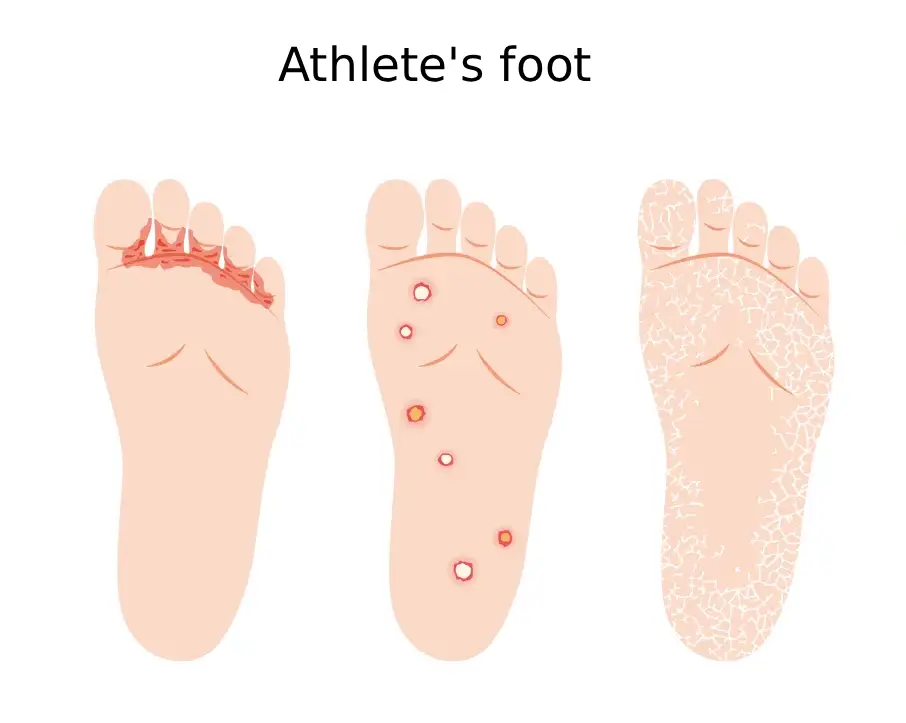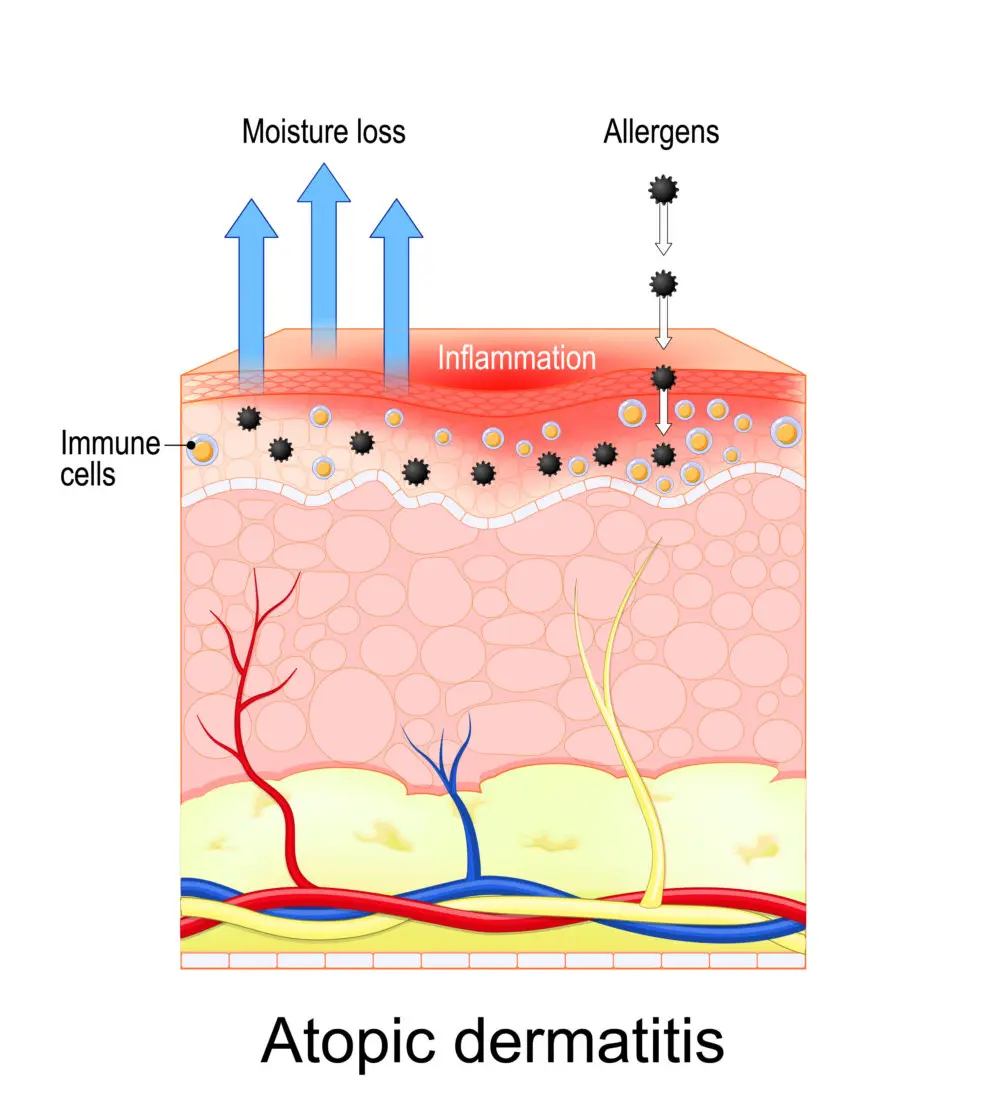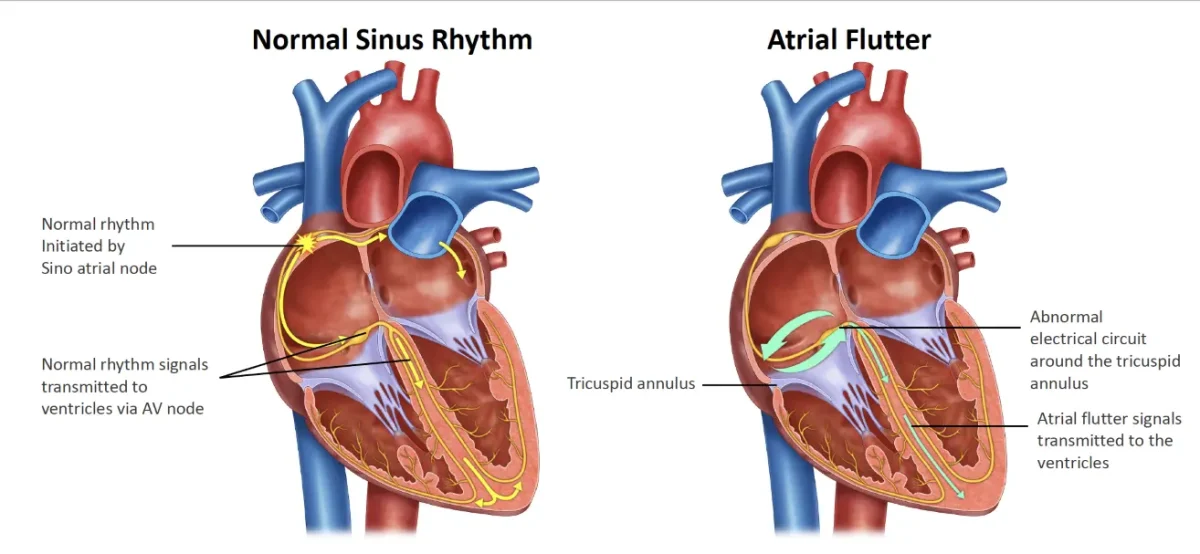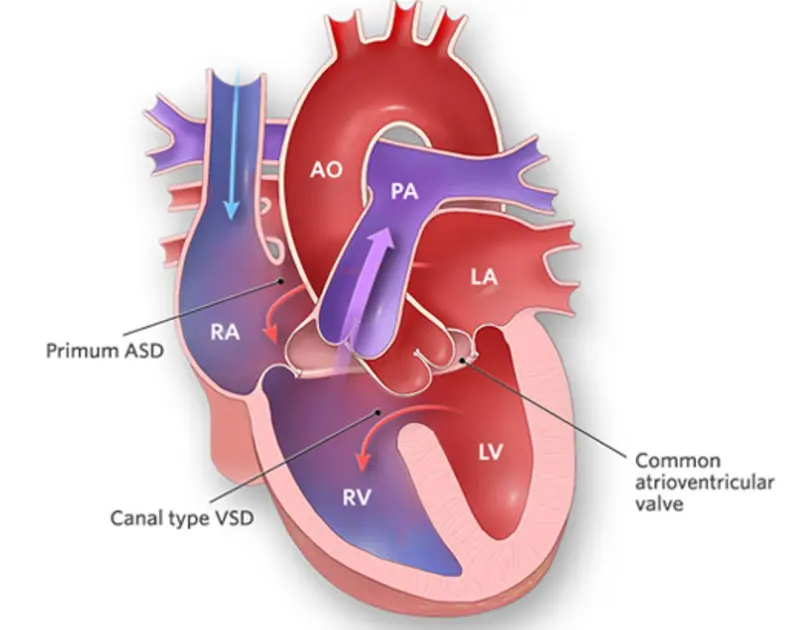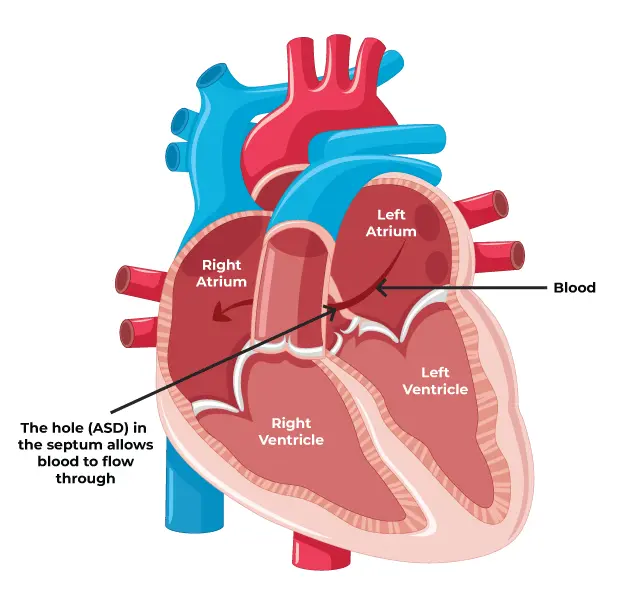Athlete’s foot, also called tinea pedis, is a common fungal skin infection that usually begins between the toes. It develops most often when feet become warm, moist and sweaty, especially after being enclosed in tight-fitting shoes for long periods. The infection is caused by fungi known as dermatophytes, which thrive in warm and damp environments. Athlete’s foot is contagious and …
Atopic Dermatitis (Eczema)
Atopic dermatitis, also known as eczema, is a chronic skin condition that causes dry, itchy, and inflamed skin. It is most common in young children, but it can affect people of any age. The condition often follows a long-term pattern, with periods when symptoms worsen, called flares, and times when the skin improves. Although atopic dermatitis can be uncomfortable and …
Atrial Flutter
Atrial flutter is a type of abnormal heart rhythm known as an arrhythmia. It affects the heart’s upper chambers, called the atria, causing them to beat faster than normal. Atrial flutter is closely related to atrial fibrillation, but the electrical activity in atrial flutter is more regular and organized. Some people may experience both conditions at different times. This condition …
Atrioventricular Canal Defect
Atrioventricular septal defect is a congenital heart defect, meaning it is present at birth. It involves a combination of heart problems that affect the center of the heart. Children born with this condition have a hole in the wall that separates the heart’s chambers, along with abnormalities of the valves that regulate blood flow through the heart. Because of this …
Atrioventricular Nodal Reentry Tachycardia (AVNRT)
Atrioventricular nodal reentry tachycardia, also called AVNRT, is a type of irregular heartbeat known as an arrhythmia. It is the most common form of supraventricular tachycardia, which means the abnormal rhythm starts in the upper part of the heart. In AVNRT, the heart suddenly begins to beat very fast, often at a rate higher than 100 beats per minute, and …
Atrioventricular Septal Defect
Atrioventricular septal defect is a congenital heart defect, meaning it is present at birth. It involves a combination of structural problems affecting the center of the heart. Children born with this condition have a hole in the wall that separates the heart chambers, along with abnormalities of the heart valves that regulate blood flow. Because of this defect, extra blood …
Vaginal Atrophy
Vaginal atrophy is a condition where the lining of your vagina gets drier and thinner. This results in itching, burning and pain during sex, among other symptoms. The condition also includes urinary tract problems such as urinary tract infections (UTIs) and urinary incontinence. Vaginal atrophy most often occurs during perimenopause and menopause when your ovaries produce less estrogen. It can occur in younger women and people assigned female at birth (AFAB) when their estrogen …
Reactive Attachment Disorder
Reactive attachment disorder (RAD) is a condition where a child doesn’t form healthy emotional bonds with their caretakers (parental figures), often because of emotional neglect or abuse at an early age. Children with RAD have trouble managing their emotions. They struggle to form meaningful connections with other people. Children with RAD rarely seek or show signs of comfort and may …
Attention-Deficit/Hyperactivity Disorder (ADHD) in Children
Attention-deficit/hyperactivity disorder, commonly known as ADHD, is a long-term neurodevelopmental condition that affects millions of children worldwide and often continues into adulthood. The disorder is marked by an ongoing pattern of inattention, hyperactivity and impulsive behavior that interferes with daily functioning and development. Children with ADHD may struggle with focus, self-control and staying organized. These challenges can affect academic performance, …
Attention-Deficit/Hyperactivity Disorder in Adults
Adult attention-deficit/hyperactivity disorder, commonly known as adult ADHD, is a mental health condition characterized by a persistent pattern of inattention, impulsivity and restlessness. Although often associated with childhood, ADHD begins early in life and may continue into adulthood. In many individuals, symptoms are not recognized or formally diagnosed until adult years. Adult ADHD can affect many areas of daily life, …
